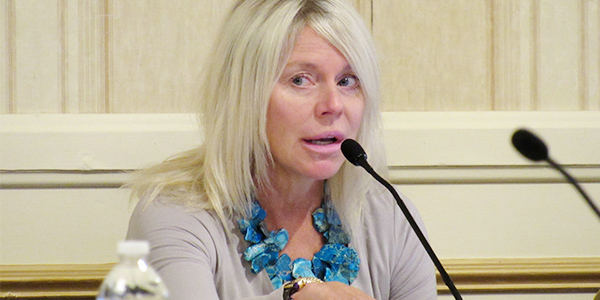MISO’s Advisory Committee is beginning work on a possible new process for prospective members to join the RTO.
The AC is considering whether the newly formed Affiliate sector will serve as an “incubator” for designing new sectors that will allow a more diverse set of companies and organizations to join MISO. The committee plans to examine how the Competitive Transmission Developer sector was formed in 2014.
MISO’s Board of Directors last month cleared the AC to create an 11th sector while instructing the committee’s to come up with a longer-term solution that guarantees members full participation in the stakeholder process. The new sector serves as a home for any member that isn’t participating in another sector, but it lacks voting power in the AC and the Planning Advisory Committee. Prospective members must declare a sector affiliation before they can join the RTO. (See Board OKs 11th MISO Sector, Orders Redesign.)
The AC will consider whether sectors should develop charters and bylaws, and how it will divvy up voting rights among new — and possibly even existing — sectors. The committee votes by sector when it decides to send recommendations to the board.
“The voting in my view is the most sensitive and possibly even contentious issue,” AC Chair Audrey Penner said.
The AC has a year from late March to draft a solution.
AC Hears LMR Saturation Concerns
The AC also briefly touched on a conversation brewing in the Reliability Subcommittee about how to set limits for load-modifying resources participating in MISO’s markets.
Some stakeholders have expressed concern about an overreliance on LMRs and are seeking analysis exploring the potential for oversaturation in the footprint. (See MISO Group to Probe LMR Saturation.)
RSC Chair Bill SeDoris said the subcommittee is asking whether there should be a limit on how many LMRs can clear in the capacity auction — or even in the day-ahead market.
“Are we there with demand response, LMRs and distributed resources?” SeDoris asked rhetorically. “Do we have enough steel in the ground generating electricity?”
Eligible End-User Customers sector representative Kevin Murray said LMRs are essential because they’re designed to be the first load in line to be interrupted during emergencies.
“Are we making sure we have the right resource mix to maintain the system reliability? Load can be cut, but the system’s designed to keep the lights on,” SeDoris said.
MISO will likely file a proposal with MISO Offers Concession on LMR Capacity Credit Plan.)
Stakeholders in the Resource Adequacy Subcommittee have since voted to formally oppose the LMR filing.
Murray called the accreditation proposal “arbitrary.”
SeDoris said he can’t tell if the leaner accreditation will cause some LMRs to walk away from the MISO capacity market. “I’m working under the assumption that the LMRs will adapt to the changing rules.”
North Dakota Public Service Commissioner Julie Fedorchak pointed out that state regulators consider the effectiveness of LMRs when appraising their utilities’ integrated resource plans.
The RSC will continue to discuss the upper limits of LMR participation in its upcoming meetings.





